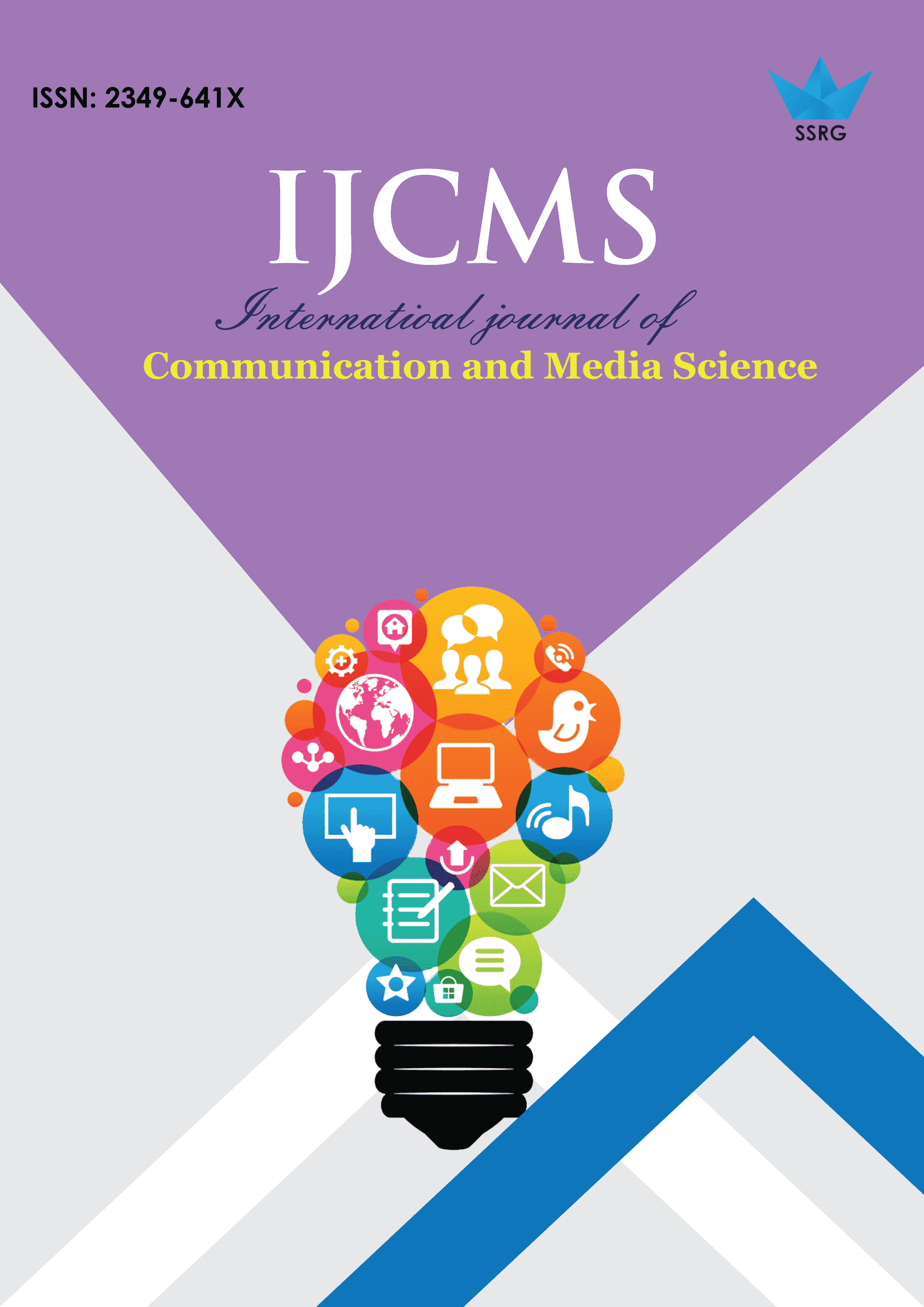Relevance of Bechdel Test and Reverse Bechdel Test in Women-Centric Indian Cinema: A Case Study of English Vinglish and Queen

| International Journal of Communication and Media Science |
| © 2020 by SSRG - IJCMS Journal |
| Volume 7 Issue 2 |
| Year of Publication : 2020 |
| Authors : J. B. Anna Asheervadham Mary, Dr. Mallika Vijaya Kumar |
How to Cite?
J. B. Anna Asheervadham Mary, Dr. Mallika Vijaya Kumar, "Relevance of Bechdel Test and Reverse Bechdel Test in Women-Centric Indian Cinema: A Case Study of English Vinglish and Queen," SSRG International Journal of Communication and Media Science, vol. 7, no. 2, pp. 1-5, 2020. Crossref, https://doi.org/10.14445/2349641X/IJCMS-V7I2P101
Abstract:
Various researchers have found that the representation of women in films has been repeatedly following gender stereotypes. The feminists all over the world have been in opposition to these gender stereotypes played by women but after constant approaches, the portrayal of female characters has changed. The films English Vinglish and Queen are used to analyze in this study using the Bechdel Test and Reverse Bechdel Test. Bechdel Test and Reverse Bechdel test are used in bringing out whether there is an existence of gender difference in films. The films are analyzed using content analysis of scenes in the films by doing an analysis of how many female characters and how many male characters are mentioned and how many female to female interations are in the film and how many male to male characters interactions are available in the film. The study concludes that the female characters are given a more important place in films than that of the male parts in women-centric films.
Keywords:
Women-Centric Films, Stereotypes, Portrayal of Women, Bechdel Test, English Vinglish and Queen
References:
[1] Agarwal, R. (2014) “Changing Roles of Women in Indian Cinema,” Silpakorn University, Journal of Social Sciences, Humanities And Arts, 14(2), 117 – 132
[2] Alzahrani, F. (April 2016). “The Portrayal of Women and Gender Roles in Films”. International Journal of Scientific and Engineering Research, 7(4), 533-534.
[3] Bharati, G. and Kumar, K. (2016). “Portrayal of Women in Indian Cinema and Print Media: Socio-Psychological Perspective”. International Journal of Applied Research, 2(6), 545-552.
[4] Essays, Uk, (November 2013). “The Portrayal of Female Characters In Films.” Retrieved from Https://Www.Ukessays.Com/Essays/Filmstudies/The-Potrayal-Of-Female-Characters-In-Films-Film-Studies-Essay.Php?Vref=1
[5] Jocelyn Nicole Murphy, “The Role of Women in Films: Supporting the Men An Analysis of How Culture Influences The Changing Discourse on Gender Representations in Films,” University of Arkansas, Fayetteville, 2015.
[6] Kumari, A. and Joshi, H. (Apr 2015). “Gender Stereotyped Portrayal of Women in The Media: Perception and Impact on Adolescent”. IOSR Journal of Humanities and Social Science (IOSR-JHSS), 20(4), Ver. II, 44 -52.
[7] Patowary, H. (June 2014). “Portrayal of Women in Indian Mass Media: An Investigation”. Journal of Education and Social Policy, 1(1), 84 – 92.
[8] Tisell, H. “The Development in Hollywood’s Gender Roles Heroes and Heroines in Re-Interpretation of Women’s Films”, University of Oslo, M.A, 2006.
[9] Magor, D. (2006) “Working Women in The News, A Study f New Media Representations of Women in The Workforce,” University of Stirling, PhD, May 200.6
[10] Patterson, M. Malley, L. and Vicky (2009) “Women in Advertising: Representations, Repercussions, Responses,” Vol. 20, Number 1, Irish Marketing Review.
[11] Kapoor, H. Bhuptani, P. And Agneswaran, A. (27th October 2015) “The Bechdel in India: Gendered Depictions in Contemporary Hindi Cinema, Journal of Gender Studies,”

 10.14445/2349641X/IJCMS-V7I2P101
10.14445/2349641X/IJCMS-V7I2P101